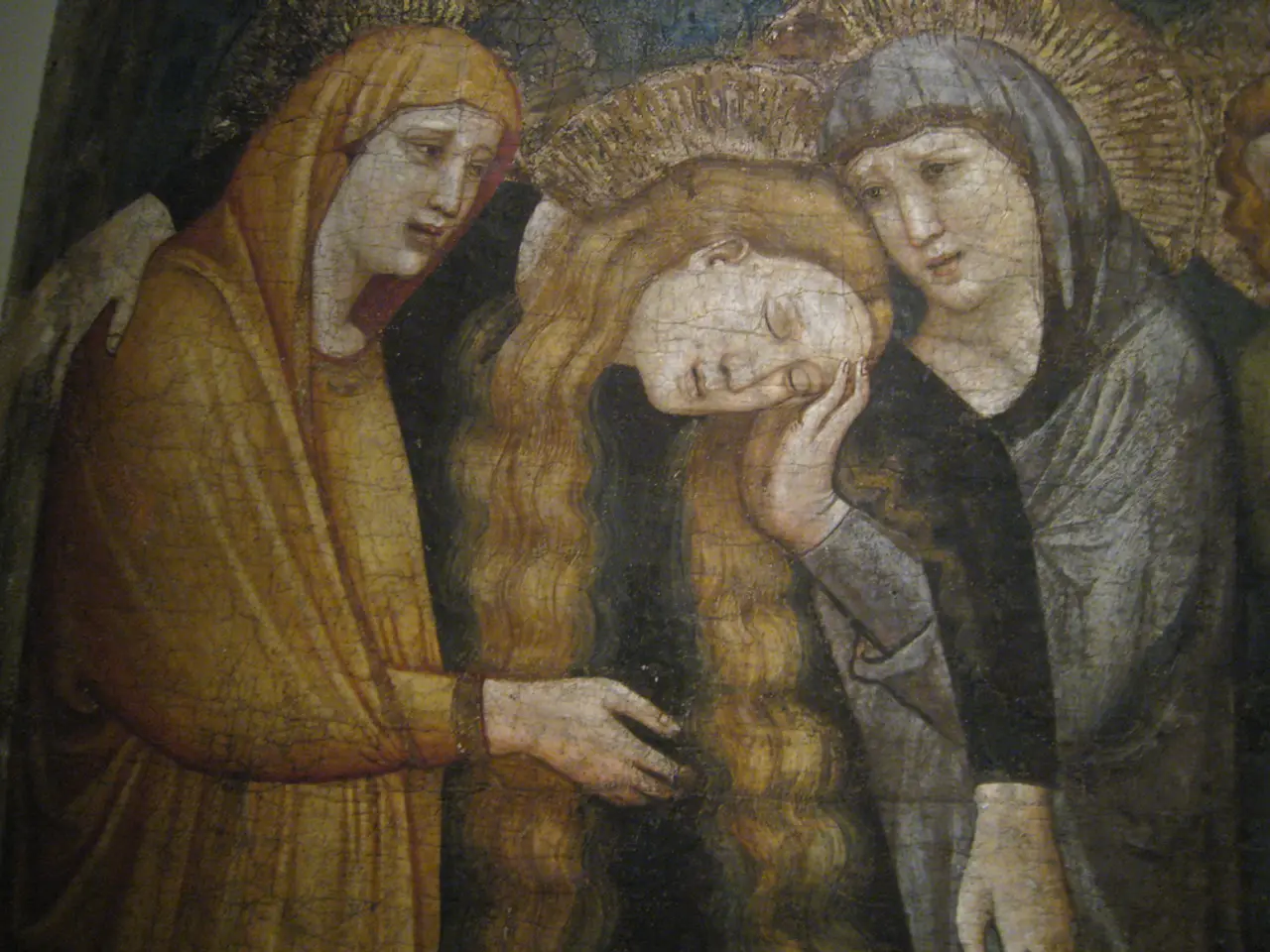U.S Senate Candidate John Fetterman Floats Legislation for Applying Anti-Money Laundering Safeguards within American Art Market
In the realm of art and politics, a significant development is unfolding in the United States. The Art Market Integrity Act, a proposed legislation, aims to introduce stringent anti-money laundering (AML) and counter-terrorism financing regulations to the US art market.
If enacted, this law would target art dealers, auction houses, art advisers, consultants, custodians, galleries, museums, collectors, and other intermediaries, requiring them to adhere to AML and counter-terrorism financing rules that are consistent with those applied to financial institutions under the Bank Secrecy Act (BSA).
Key provisions of the Act would require covered art market participants to conduct customer due diligence to identify and verify customers, including beneficial owners. They would also be required to report currency transactions above certain thresholds and suspicious transactions related to money laundering or terrorist financing. Maintaining detailed records of transactions and customer information for regulatory review would also be a requirement.
The bill, supported by Senators Chuck Grassley (R-IA), Sheldon Whitehouse (D-RI), Bill Cassidy (R-LA), Andy Kim (D-NJ), and David McCormick (R-PA), has received endorsements from various organisations such as the Antiquities Coalition, Transparency International U.S., the FACT Coalition, FDD Action, the American Jewish Committee, Razom for Ukraine, American Coalition for Ukraine, the Initiative for the Recovery of Venezuelan Assets (INRAV), the National Border Patrol Council, and the Federal Law Enforcement Officers Association (FLEOA).
The Treasury Department identified the art market as particularly susceptible to money laundering and the evasion of international sanctions last year. Several high-profile cases have underscored this issue, including the cases of Nazem Ahmad, the Rotenberg brothers, Roman Abramovich, and Dimitri Simes.
Notably, the bill does not include applied art such as product design, fashion design, architectural design, or interior design; or mass-produced decorative art, including ceramics, textiles, or carpets. It fully exempts artists who sell their own works, as well as nonprofit organisations. Works of art, as defined by the bill, include original paintings, sculptures, watercolors, prints, drawings, photographs, installation art, or video art.
The bill's lead author is Senator John Fetterman (D-PA). If passed, the Art Market Integrity Act would align the US with international standards already adopted by the United Kingdom, European Union, and Switzerland, preventing America from becoming a safe haven for illicit activities. It would also exempt artists themselves and businesses with under $50,000 in annual art transactions.
However, some, like Erin Thompson, a professor of art crime at the John Jay College of Criminal Justice, have expressed skepticism about the bill's success due to the art market's history of resisting regulation.
[1] Source: Art Market Transparency, "The Art Market Integrity Act: A Comprehensive Overview" [2] Source: The Art Newspaper, "The Art Market Integrity Act: What Does it Mean for the US Art Market?" [3] Source: The Hill, "The Art Market Integrity Act: A Step Forward in Combating Money Laundering and Sanctions Evasion" [4] Source: Forbes, "The Art Market Integrity Act: A Closer Look at the Proposed Legislation" [5] Source: The Washington Post, "The Art Market Integrity Act: A New Approach to Transparency and Accountability in the Art World"
- The Art Market Integrity Act, if enacted, will introduce stringent anti-money laundering and counter-terrorism financing regulations to the US art market, targeting art dealers, auction houses, art advisers, collectors, and other intermediaries.
- Key provisions of the Act require covered art market participants to conduct customer due diligence, report certain currency transactions, and maintain detailed records for regulatory review.
- Works of art, as defined by the bill, include original paintings, sculptures, drawings, photographs, installation art, or video art, but it does not include applied art such as product design, fashion design, or mass-produced decorative art, including ceramics, textiles, or carpets.
- The bill, supported by several US Senators and various organizations, aims to align the US with international standards already adopted by countries like the United Kingdom, European Union, and Switzerland.
- If passed, the Act would exempt artists who sell their own works and businesses with under $50,000 in annual art transactions.
- Notably, the bill has received endorsements from organizations such as the Antiquities Coalition, Transparency International U.S., the FACT Coalition, and the Federal Law Enforcement Officers Association (FLEOA).
- Despite the bill's potential impact, some, like Erin Thompson, a professor of art crime at the John Jay College of Criminal Justice, have expressed skepticism about the bill's success due to the art market's history of resisting regulation.
[List of Sources: [1] Art Market Transparency, "The Art Market Integrity Act: A Comprehensive Overview" [2] The Art Newspaper, "The Art Market Integrity Act: What Does it Mean for the US Art Market?" [3] The Hill, "The Art Market Integrity Act: A Step Forward in Combating Money Laundering and Sanctions Evasion" [4] Forbes, "The Art Market Integrity Act: A Closer Look at the Proposed Legislation" [5] The Washington Post, "The Art Market Integrity Act: A New Approach to Transparency and Accountability in the Art World"]





